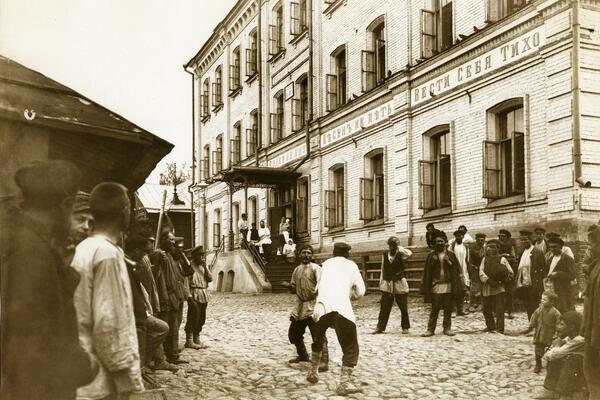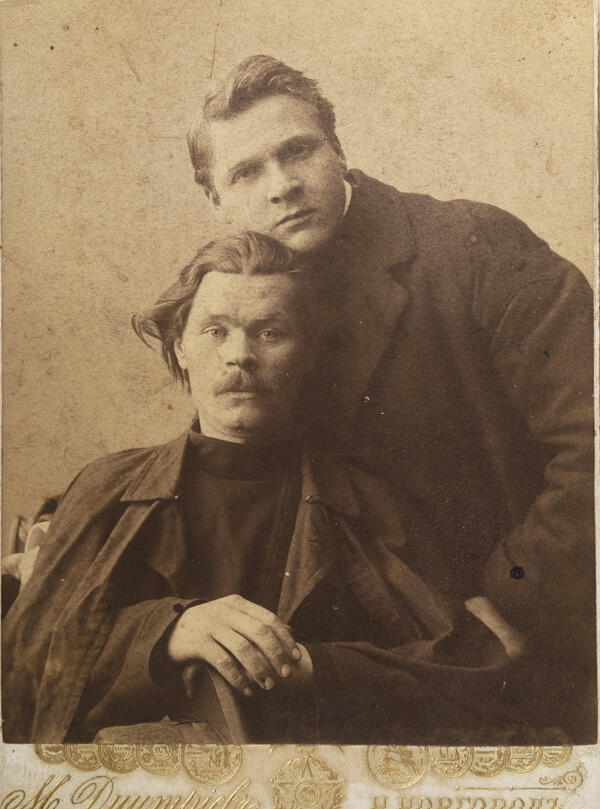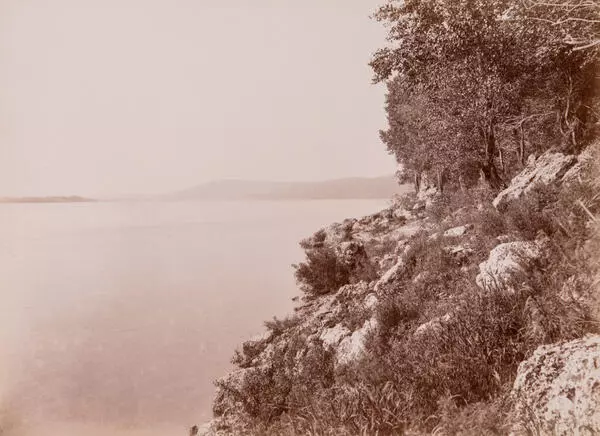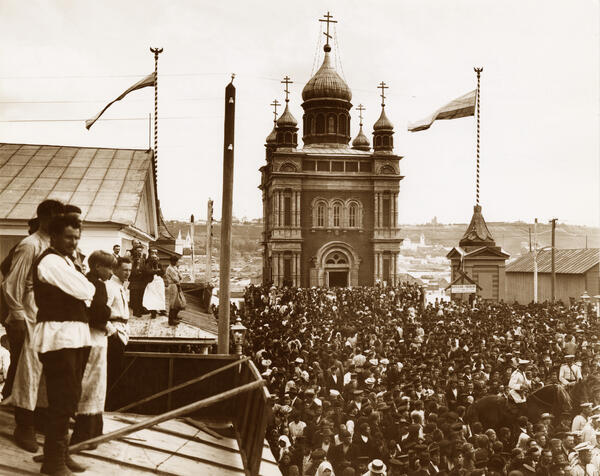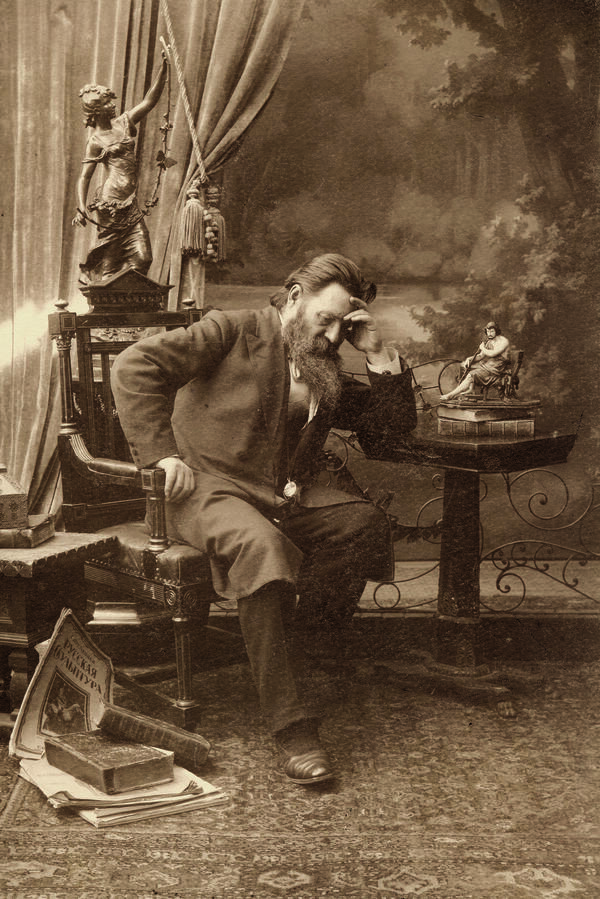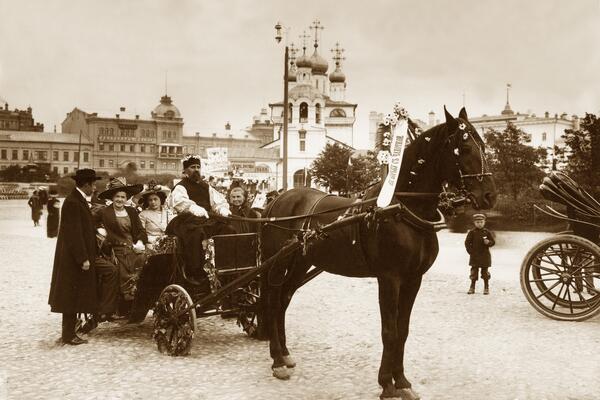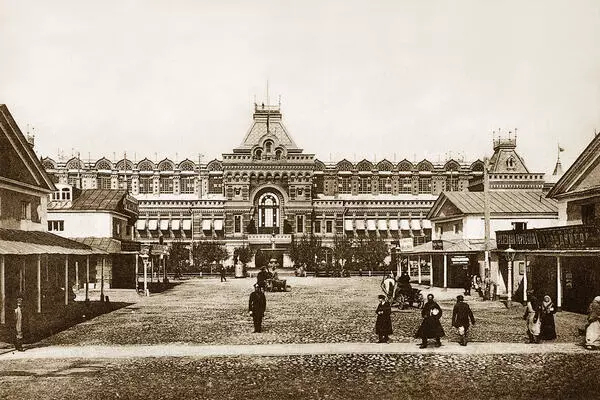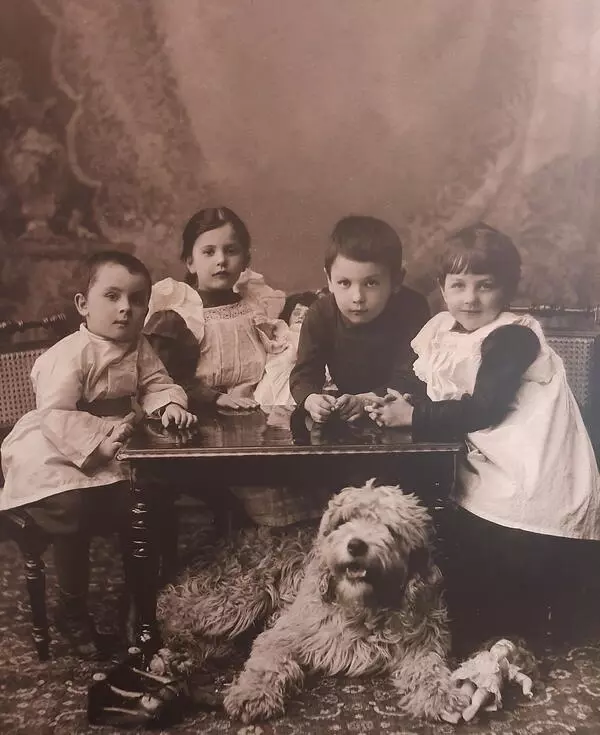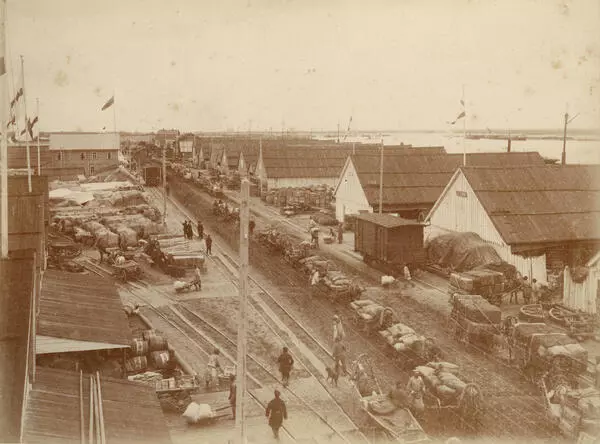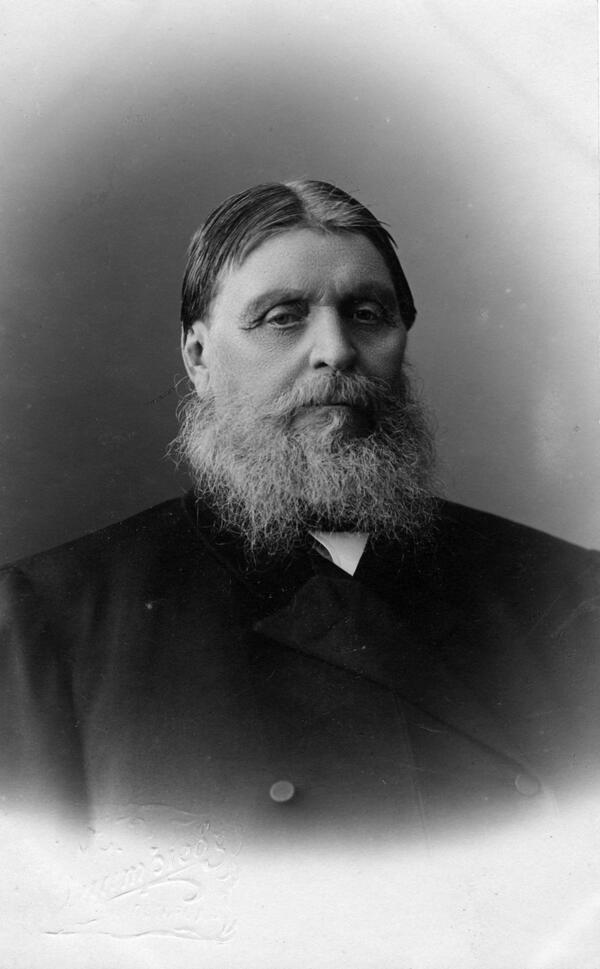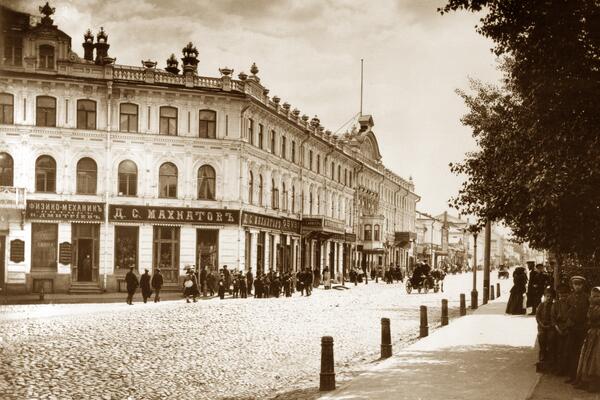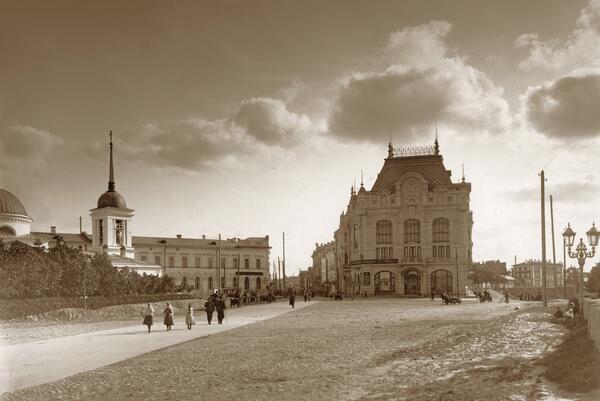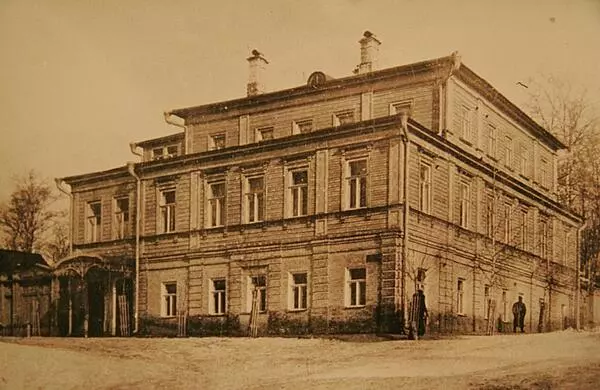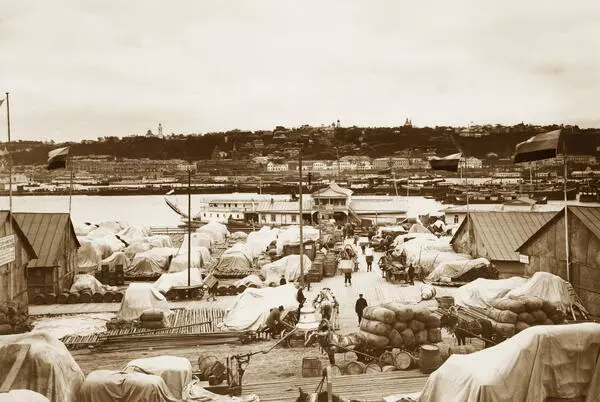On July 15, 1822, the Nizhny Novgorod Fair trade complex was inaugurated. From that moment, the fair had been held annually from July 15 to the beginning of September for a hundred years.
The construction of the fair was led by Agustín de Betancourt. He chose to situate it on the low left bank of the Volga to make it easier to unload goods.
The central part of the fair was the Gostiny Dvor, designed by Agustín de Betancourt. It consisted of 60 separate buildings with 2530 shops. The Gostiny Dvor was protected from fires by a bypass canal.
The main building in the spirit of classicism, flanked by administrative buildings, formed the central parade square. A 3.5-meter-tall dam was built to protect it from spring floods that were common in the place. On the banks of the bypass canal, there were over 40 large stone buildings designed for trade and storage.
65% of all Asian goods brought to Russia were sold in Nizhny Novgorod. It was also there that Western Europe traded in cloth, dyes, wines, and dry goods. The fair was also the place for making big wholesale grain deals. As people back then said, “Europe meets Asia at the fair”.
In the mid-19th century, the Nizhny Novgorod Fair welcomed 15,000 traders and 200,000 visitors every season. Back then, Nizhny Novgorod was inhabited by 16,000 people in total.
The fair occupied eight square kilometers on a large spit called Strelka, formed at the confluence of the Oka and Volga rivers. The Nizhny Novgorod Fair occupied eight squares and several dozen streets. There was a parade boulevard that stretched from the Old Fair Cathedral to the Main Fair Building with 48 two-story trade buildings that consisted of shops on the first floor and the owners’ quarters on the second one. There were also streets that ran perpendicularly to the boulevard.
At the intersection of Alexander Nevsky Street and Nizhegorodskaya Street, there were multistory hotels and inns of the Yermolayevs and Sobolevs.
On July 20, 1881, a cathedral, built
according to the project by Robert Yakovlevich Kilevein, was consecrated in the
name of the Holy Prince Alexander Nevsky. The construction lasted for 14 years.
The 87-meter-tall cathedral with five hipped roofs was erected at the
confluence of the Oka and Volga rivers at the initiative of the merchants who
traded at the fair, using the money they raised. Emperor Alexander III himself
attended the ceremony of the cathedral’s consecration since the Holy Prince
Alexander Nevsky was considered his patron saint. The emperor visited Nizhny
Novgorod five times. He came to the consecration ceremony with his family
(including Tsarevich Nicholas — the future emperor) and a large entourage.




